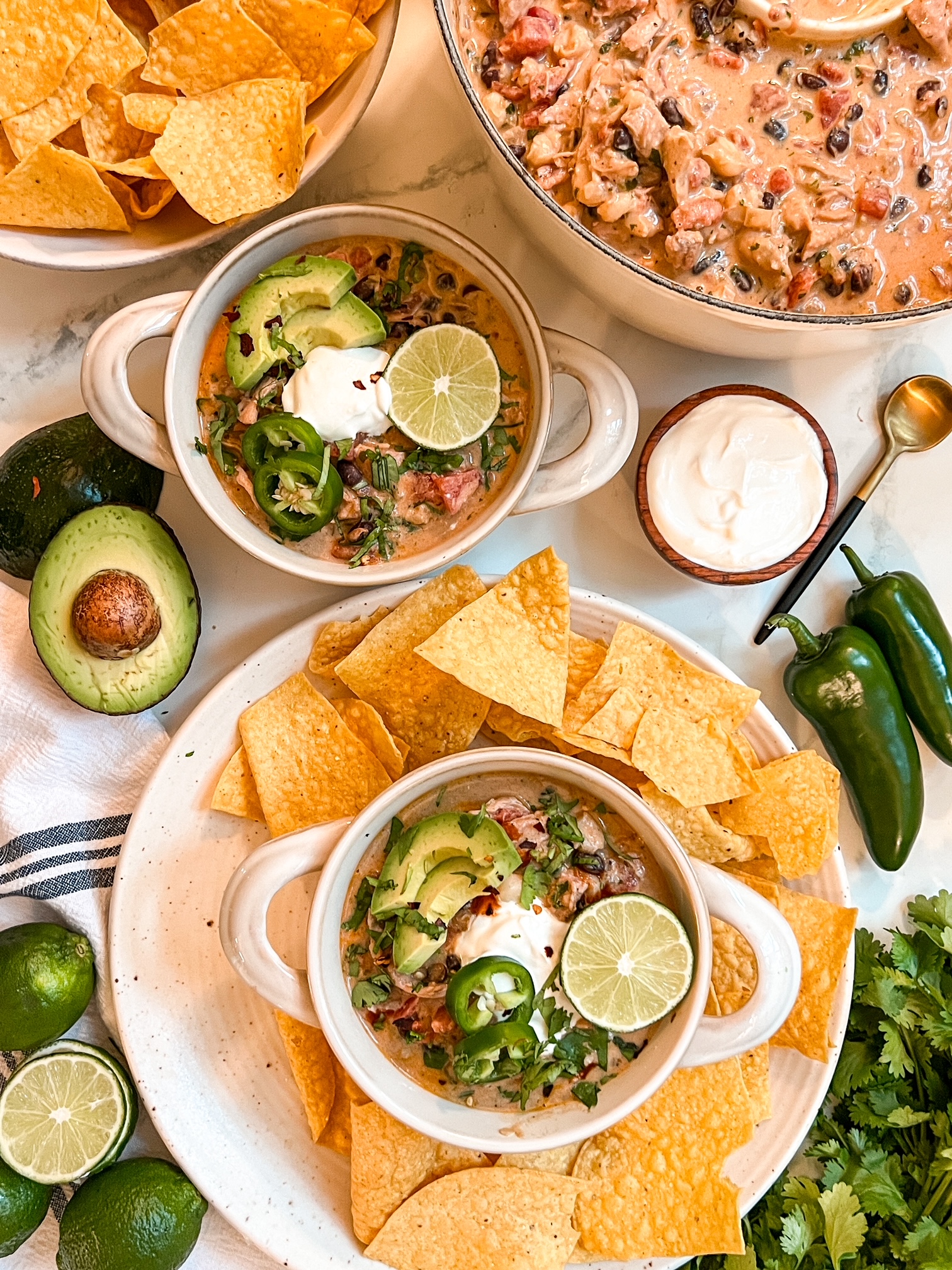
Spicy Cowboy Chicken Taco Soup
INGREDIENTS
- 1.5-2 pounds boneless, skinless chicken breasts
- 2 tablespoons olive oil
- 1 small onion, chopped
- 4 cloves garlic, minced
- 1-2 jalapeños, depending on spice level
- 1 tablespoon chili powder
- 1 teaspoon dried oregano
- 1 teaspoon ground cumin
- 1 teaspoon smoked paprika
- 1/2 teaspoon chipotle chili powder
- 1/4 teaspoon cayenne pepper
- 3-4 cups chicken broth, see notes
- 2 (10 ounces) cans Ro-tel diced tomatoes & green chilies with juices
- 1 (10 ounces) can red enchilada sauce
- 1 (14 ounces) can black beans drained & rinsed
- 1 (28 ounces) can white hominy drained
- 8 ounces cream cheese softened to room temperature
- 8 ounces pepper jack cheese, grated and room temperature
- 1 lime, zested and juiced
- 1/3 cup cilantro, finely chopped
- Salt & pepper to taste
- Garnish: grated cheddar, sour cream, avocado, cilantro, and tortilla strips
INSTRUCTIONS
-
Add the oil and whole chicken breasts, seasoned with salt and pepper, to a large soup pot over medium-high heat. Brown it on both sides for about 6 minutes. Remove from the pot and let cool on a cutting board. Don't worry if it looks a little undercooked. Shred into bite-size pieces.
- To the same pot add onion and cook for 4-5 minutes. You may need to add a little more oil to the pot if the onion begins to stick. Add garlic, jalapeños, and spices. Cook while stirring for 1 minute.
-
Add 3 cups of chicken broth, Rotel, enchilada sauce, black beans, hominy, and shredded chicken to the pot. Increase the heat to high and bring the soup to a boil. Turn down the heat so it's simmering gently for 10-12 minutes. While the soup cooks, prep your toppings.
-
Cut the cream cheese into smaller pieces and add it to the soup. Let it melt in (you may have to stir it a fair bit until it's fully dissolved). Add pepper jack cheese, zest & juice of lime, and cilantro. Stir until cheese has melted. Note: If soup seems too thick, add the extra cup of chicken broth.
-
Season the soup with salt & pepper and serve with toppings as desired. Enjoy!
